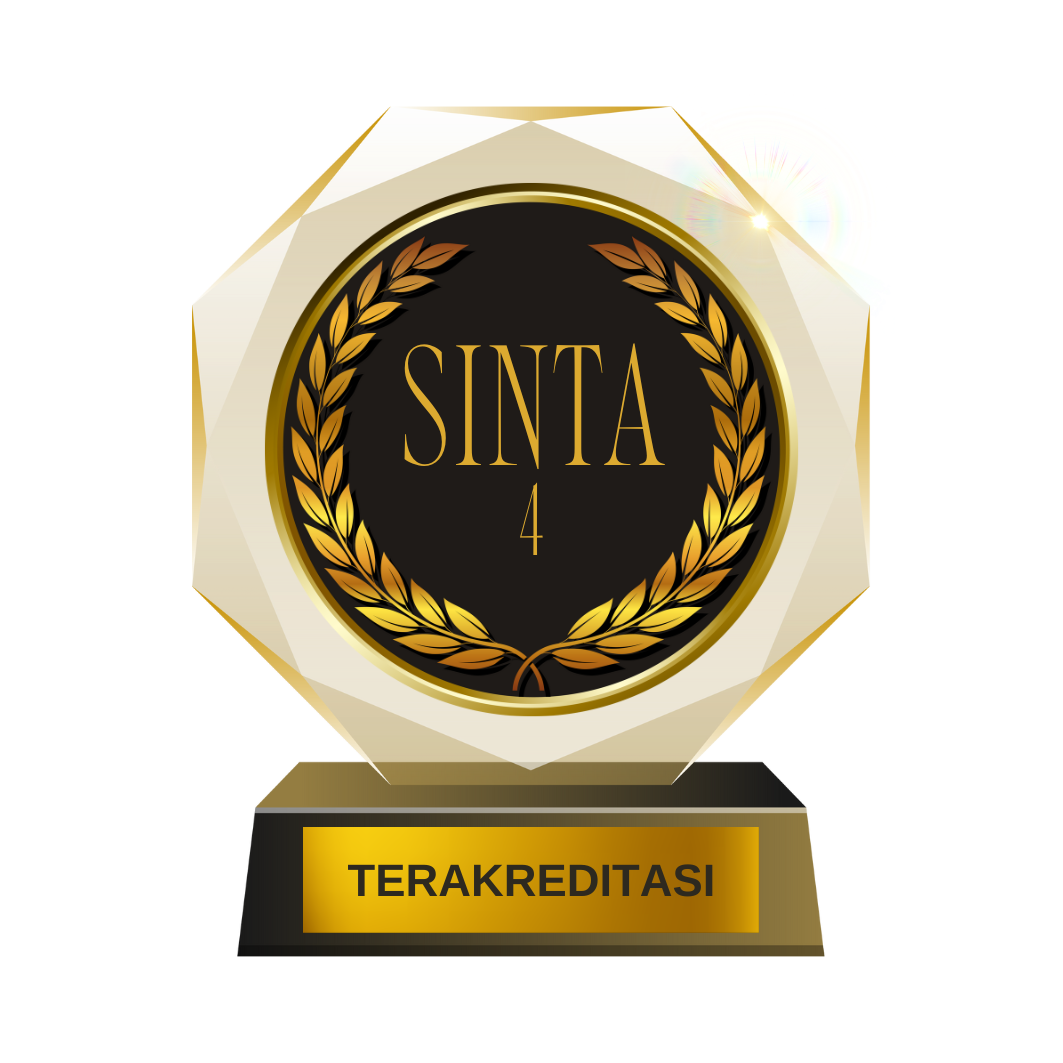Disjoint Community Detection pada Network Kegiatan Kemahasiswaan di ISTTS Menggunakan Fast Greedy dan Walktrap
DOI:
https://doi.org/10.52985/insyst.v3i1.175Keywords:
Closeness Centrality, Correlation Coefficient, Disjoint Community Detection, Network Kegiatan MahasiswaAbstract
Disjoint community detection bertujuan untuk menemukan sebuah komunitas pada network dengan melakukan pemisahan. Pada penelitian ini, disjoint akan dilakukan pada network kegiatan kemahasiswaan di ISTTS. Metode disjoint community detection yang digunakan adalah fast greedy dan walktrap algorithm. Data kegiatan kemahasiswaan berisi mengenai mahasiswa bersama-sama dengan mahasiswa lainnya mengikuti kegiatan kemahasiswaan apa saja. Setelah disjoint berhasil dilakukan, maka akan dihitung nilai closeness centrality dari setiap mahasiswa, dimana pada akhirnya akan dihitung correlation coefficient dengan IPK mahasiswa tersebut untuk mencari hubungan antara centrality mahasiswa dengan IPK mereka. Hasil closeness centrality ini selanjutnya di rata-rata untuk semua hasil algoritma untuk melihat bagaimana korelasi closeness centrality dengan ipk mahasiswa tersebut. Uji coba dilakukan dengan membentuk gml dari kombinasi filter, yang menghasilkan sekitar 2527 gml dengan nilai akhir korelasi adalah 62 - 63% weak positif dengan diikuti 16-18% moderate positif, dan 14-16% tidak berkorelasi sama sekali. Akhirnya dapat disimpulkan bahwa closeness centrality dalam sebuah komunitasnya, hanya berpengaruh secara weak positif dengan ipk mahasiswa tersebut.
References
R. Freeman, “The relationship between extracurricular activities and academic achievement,” 2017.
G. M. Ritchie, “The Impact of Academic Co-Curricular Activity Participation on Academic Achievement: A Study of Catholic High School Students,” 2018.
S. Fortunato, “Community detection in graphs,” Phys. Rep., vol. 486, no. 3–5, pp. 75–174, 2010.
M. E. J. Newman, “Fast algorithm for detecting community structure in networks,” Phys. Rev. E, vol. 69, no. 6, p. 66133, 2004.
M. E. J. Newman, “Detecting community structure in networks,” Eur. Phys. J. B, vol. 38, no. 2, pp. 321–330, 2004.
S. Paul and Y. Chen, “Null models and modularity based community detection in multi-layer networks,” arXiv Prepr. arXiv1608.00623, 2016.
P. Pons and M. Latapy, “Computing communities in large networks using random walks,” in International symposium on computer and information sciences, 2005, pp. 284–293.
J. Zhang and Y. Luo, “Degree centrality, betweenness centrality, and closeness centrality in social network,” in Proceedings of the 2017 2nd International Conference on Modelling, Simulation and Applied Mathematics (MSAM2017), 2017, vol. 132, pp. 300–303.
T. Opsahl, F. Agneessens, and J. Skvoretz, “Node centrality in weighted networks: Generalizing degree and shortest paths,” Soc. Networks, vol. 32, no. 3, pp. 245–251, 2010.
P. Schober, C. Boer, and L. A. Schwarte, “Correlation coefficients: appropriate use and interpretation,” Anesth. & Analg., vol. 126, no. 5, pp. 1763–1768, 2018.
D. M. Corey, W. P. Dunlap, and M. J. Burke, “Averaging correlations: Expected values and bias in combined Pearson rs and Fisher’s z transformations,” J. Gen. Psychol., vol. 125, no. 3, pp. 245–261, 1998.
A. A. Hagberg, D. A. Schult, and P. J. Swart, “Exploring Network Structure, Dynamics, and Function using NetworkX,” in Proceedings of the 7th Python in Science Conference, 2008, pp. 11–15.
G. Csardi and T. Nepusz, “The igraph software package for complex network research,” InterJournal, vol. Complex Sy, p. 1695, 2006.
G. A. Pavlopoulos, D. Paez-Espino, N. C. Kyrpides, and I. Iliopoulos, “Empirical comparison of visualization tools for larger-scale network analysis,” Adv. Bioinformatics, vol. 2017, 2017.
G. Perrone, J. Unpingco, and H. Lu, “Network visualizations with Pyvis and VisJS,” CoRR, vol. abs/2006.0, 2020.
V. E. Krebs, “Mapping networks of terrorist cells,” Connections, vol. 24, no. 3, pp. 43–52, 2002.
S. P. Borgatti, “Centrality and network flow,” Soc. Networks, vol. 27, no. 1, pp. 55–71, 2005.
Downloads
Published
How to Cite
Issue
Section
License
Copyright (c) 2022 Journal of Intelligent System and Computation

This work is licensed under a Creative Commons Attribution-NonCommercial-ShareAlike 4.0 International License.








